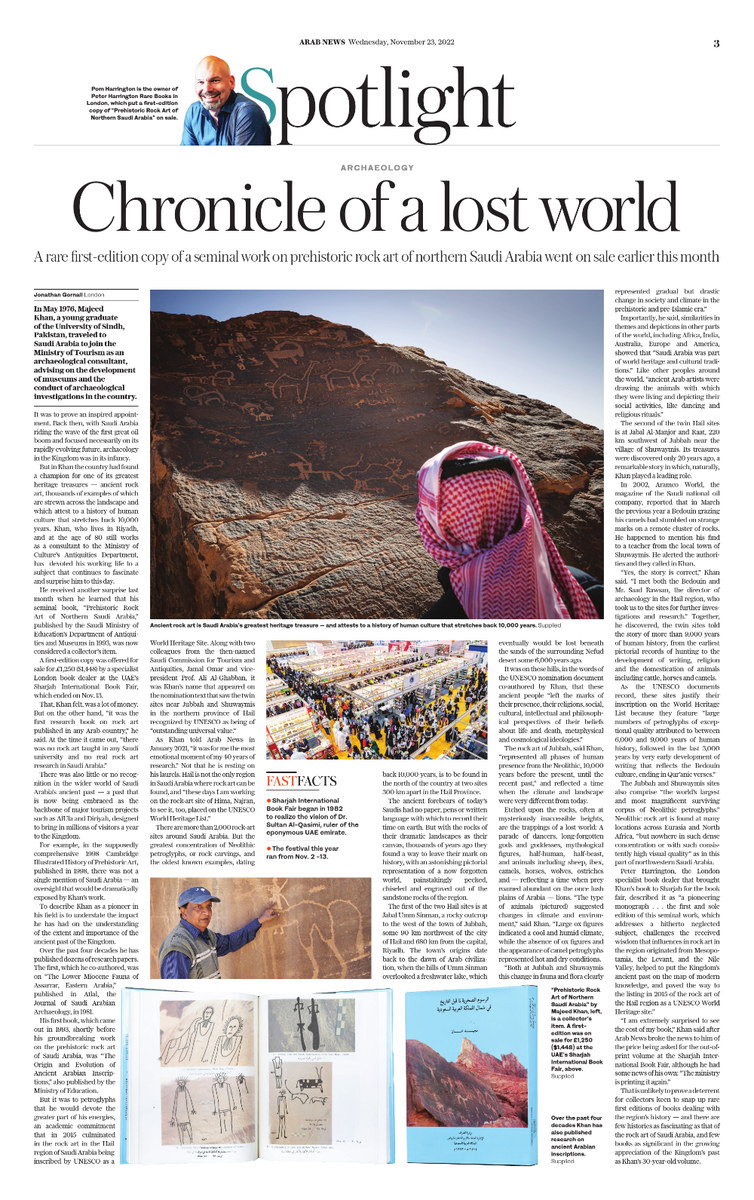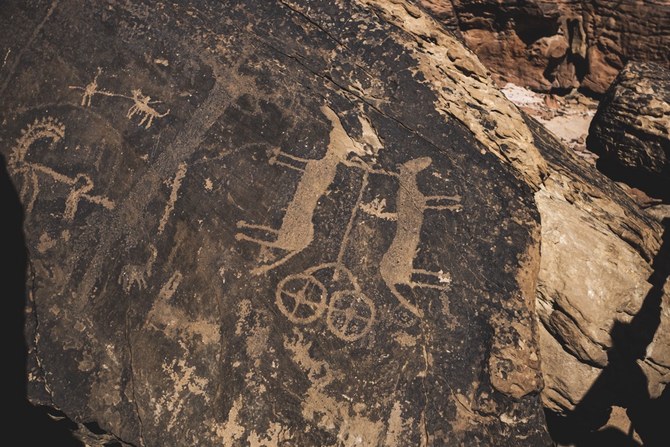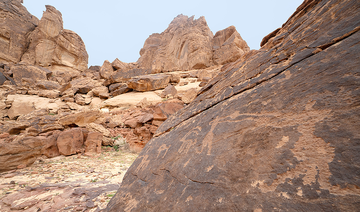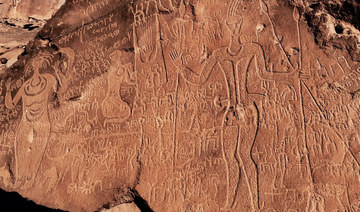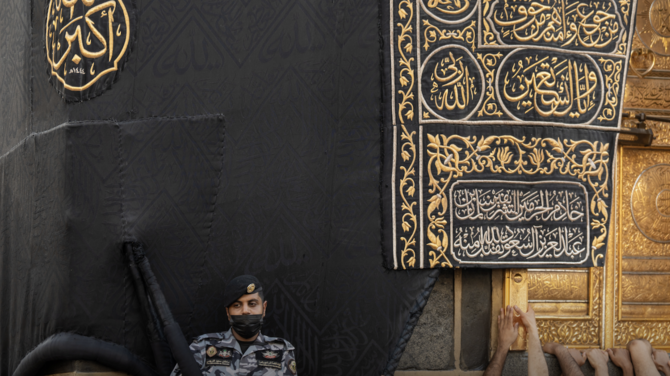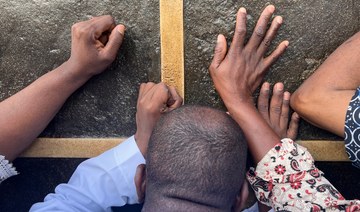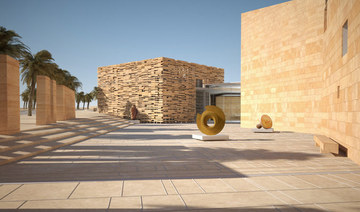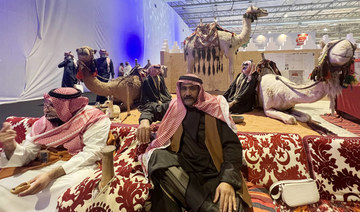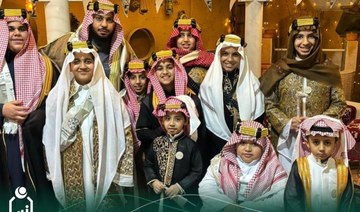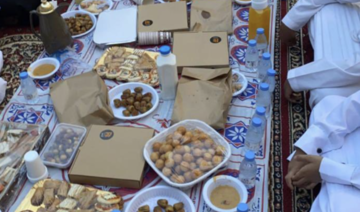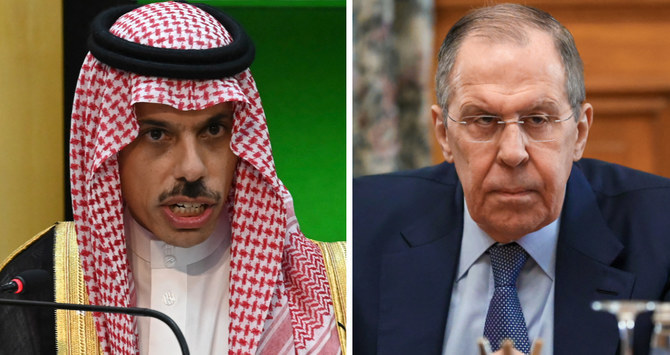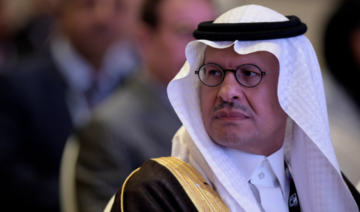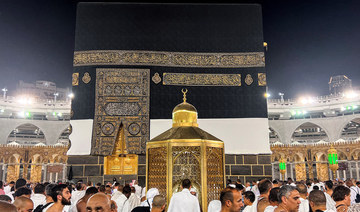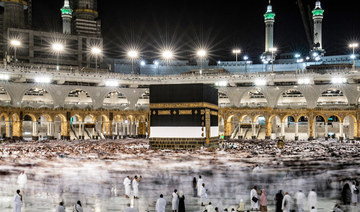LONDON: In May 1976, Majeed Khan, a young graduate of the University of Sindh, Pakistan, traveled to Saudi Arabia to join the Ministry of Tourism as an archaeological consultant, advising on the development of museums and the conduct of archaeological investigations in the country.
It was to prove an inspired appointment.
Back then, with Saudi Arabia riding the wave of the first great oil boom and focused necessarily on its rapidly evolving future, archaeology in the Kingdom was in its infancy.
But in Khan the country had found a champion for one of its greatest heritage treasures — ancient rock art, thousands of examples of which are strewn across the landscape and which attest to a history of human culture that stretches back 10,000 years.
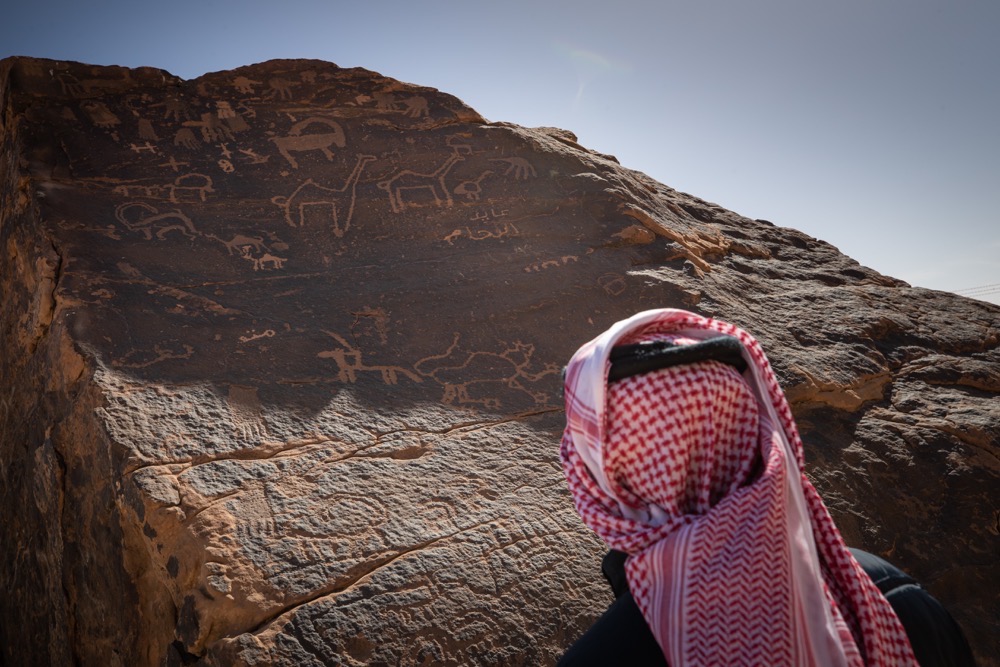
Khan, who lives in Riyadh, and at the age of 80 still works as a consultant to the Ministry of Culture’s Antiquities Department, has devoted his entire working life to a subject that continues to fascinate and surprise him to this day.
He received another surprise last month when he learned that his seminal book, “Prehistoric Rock Art of Northern Saudi Arabia,” published by the Saudi Ministry of Education’s Department of Antiquities and Museums in 1993, was now considered a collector’s item.
A first-edition copy was offered for sale for £1,250 ($1,448) by a specialist London book dealer at the UAE’s Sharjah International Book Fair, which ran from Nov. 2 to 13.
That, Khan felt, was a lot of money. But on the other hand, “it was the first research book on rock art published in any Arab country,” he said. At the time it came out, “there was no rock art taught in any Saudi university and no real rock art research in Saudi Arabia.”
Furthermore, there was little or no recognition in the wider world of Saudi Arabia’s ancient past — a past that is now being embraced enthusiastically as the backbone of major tourism projects, such as AlUla and Diriyah, designed to bring in millions of visitors a year to the Kingdom.
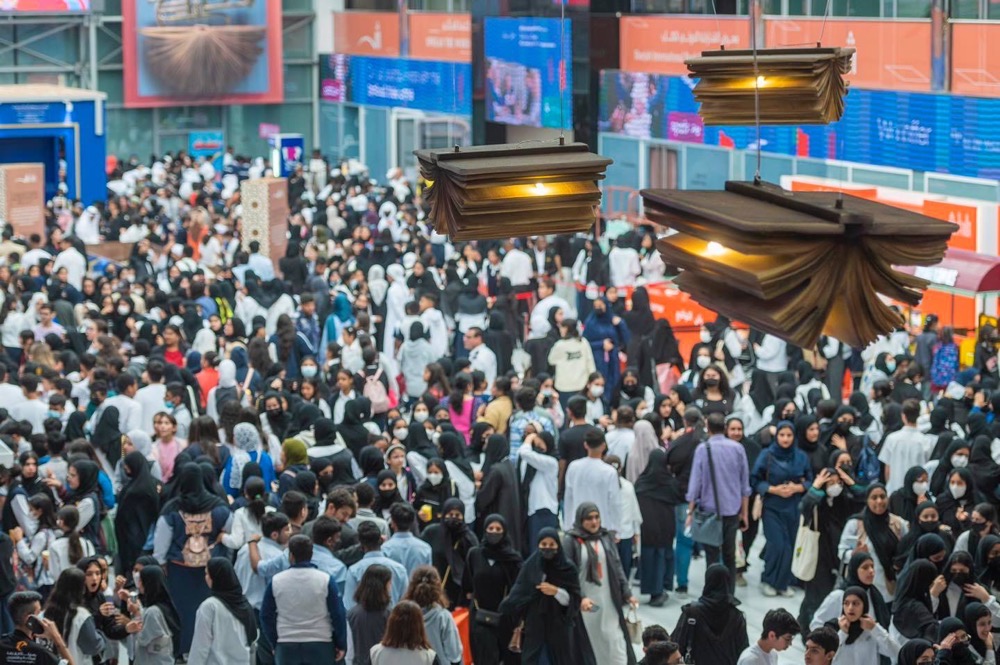
A first-edition copy was offered for sale for £1,250 ($1,448) by a specialist London book dealer at the UAE’s Sharjah International Book Fair, which ran from Nov. 2 to 13. (Supplied)
For example, in the supposedly comprehensive 1998 Cambridge Illustrated History of Prehistoric Art, published in 1998, there was not a single mention of Saudi Arabia — an oversight that would be dramatically exposed by Khan’s work.
To describe Khan as a pioneer in his field is to understate the impact he has had on the understanding of the extent and importance of the ancient past of the Kingdom.
Over the past four decades he has published dozens of research papers. The first, which he co-authored, was on “The Lower Miocene Fauna of Assarrar, Eastern Arabia,” published in Atlal, the Journal of Saudi Arabian Archaeology, in 1981.
His first book, which came out in 1993, shortly before his groundbreaking work on the prehistoric rock art of Saudi Arabia, was “The Origin and Evolution of Ancient Arabian Inscriptions,” also published by the Ministry of Education.
But it was to petroglyphs that he would devote the greater part of his energies, an academic commitment that in 2015 culminated in the rock art in the Hail region of Saudi Arabia being inscribed by UNESCO as a World Heritage Site.
Along with two colleagues from the then-named Saudi Commission for Tourism and Antiquities, Jamal Omar and vice-president Prof. Ali Al-Ghabban, it was Khan’s name that appeared on the nomination text that saw the twin sites near Jubbah and Shuwaymis in the northern province of Hail recognized by UNESCO as being of “outstanding universal value.”
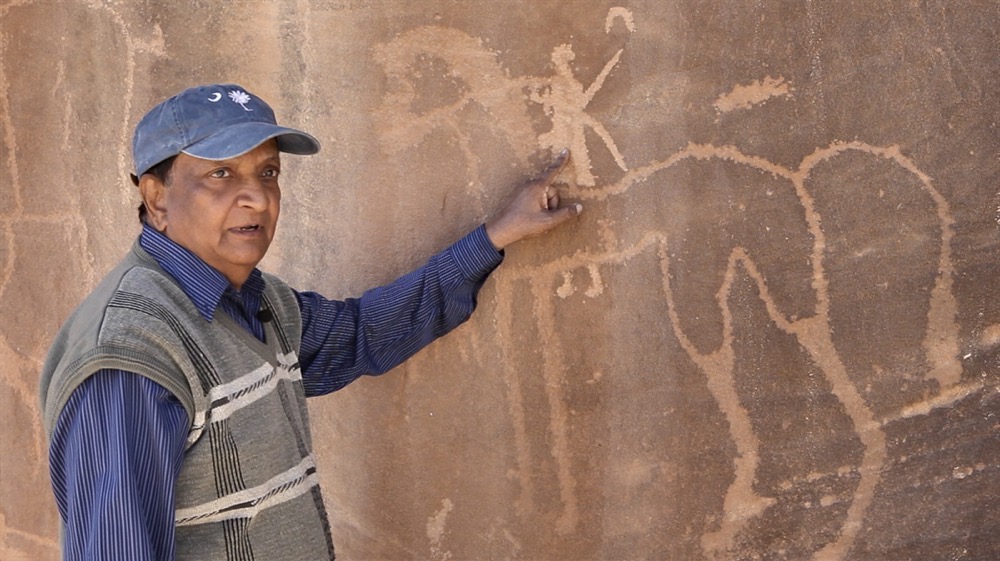
To describe Majeed Khan as a pioneer in his field is to understate. (Supplied)
As Khan told Arab News in January 2021, “it was for me the most emotional moment of my 40 years of research.”
Not that he is resting on his laurels. Hail is not the only region in Saudi Arabia where rock art can be found, and “these days I am working on the rock-art site of Hima, Najran, to see it, too, placed on the UNESCO World Heritage List.”
There are more than 2,000 rock-art sites around Saudi Arabia. But the greatest concentration of Neolithic petroglyphs, or rock carvings, and the oldest known examples, dating back 10,000 years, is to be found in the north of the country at two sites 300 kilometers apart in the Hail Province.
The ancient forebears of today’s Saudis had no paper, pens, or written language with which to record their time on earth.
But with the rocks of their dramatic landscapes as their canvas, thousands of years ago the ancient peoples of the land that would become Saudi Arabia found a way to leave their mark on history, with an astonishing pictorial representation of a now forgotten world, painstakingly pecked, chiseled and engraved out of the sandstone rocks of the region.
The first of the two Hail sites is at Jabal Umm Sinman, a rocky outcrop to the west of the town of Jubbah, some 90 kilometers northwest of the city of Hail and 680 kilometers from the capital, Riyadh.

The town’s origins date back to the dawn of Arab civilization, when the hills of Umm Sinman overlooked a freshwater lake, which eventually would be lost beneath the sands of the surrounding Nefud desert some 6,000 years ago.
It was on these hills, in the words of the UNESCO nomination document co-authored by Khan, that the ancestors of today’s Saudi Arabians “left the marks of their presence, their religions, social, cultural, intellectual and philosophical perspectives of their beliefs about life and death, metaphysical and cosmological ideologies.”
The rock art of Jubbah, said Khan, “represented all phases of human presence from the Neolithic, 10,000 years before the present, until the recent past,” and reflected a time when the climate and landscape were very different from today.
Etched upon the rocks, often at mysteriously inaccessible heights, are the trappings of a lost world: A parade of dancers, long-forgotten gods and goddesses, mythological figures, half-human, half-beast, and animals including sheep, ibex, camels, horses, wolves, ostriches and — reflecting a time when prey roamed abundant on the once lush plains of Arabia — lions.
“The type of animals (pictured) suggested changes in climate and environment,” said Khan. “Large ox figures indicated a cool and humid climate, while the absence of ox figures and the appearance of camel petroglyphs represented hot and dry conditions.
FASTFACTS
• Sharjah International Book Fair began in 1982 to realize the vision of Dr. Sultan Al-Qasimi, ruler of the eponymous UAE emirate.
• The festival this year ran from Nov. 2 -13.
“Both at Jubbah and Shuwaymis this change in fauna and flora clearly represented gradual but drastic change in society and climate in the prehistoric and pre-Islamic era.”
Importantly, he said, similarities in themes and depictions in other parts of the world, including Africa, India, Australia, Europe and America, showed that “Saudi Arabia was part of world heritage and cultural traditions.”
Like other peoples around the world, “ancient Arab artists were drawing the animals with which they were living and depicting their social activities, like dancing and religious rituals.”
The second of the twin Hail sites is at Jabal Al-Manjor and Raat, 220 kilometers southwest of Jubbah near the village of Shuwaymis. Remarkably, its treasures were discovered only 20 years ago, a remarkable story in which, naturally, Khan played a leading role.
In 2002, Aramco World, the magazine of the Saudi national oil company, reported that in March the previous year a bedouin grazing his camels had stumbled on strange marks on a remote cluster of rocks. He happened to mention his find to a teacher from the local town of Shuwaymis. He alerted the authorities and they called in Khan.
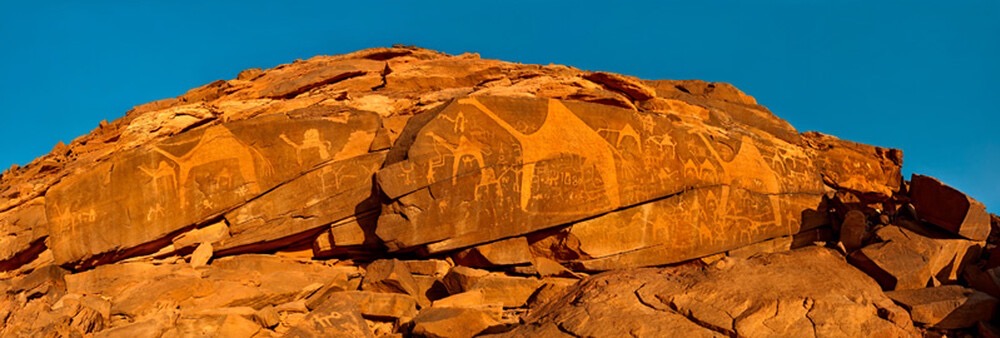
“Yes, the story is correct,” Khan said. “I met both the bedouin and Mr. Saad Rawsan, the director of archaeology in the Hail region, who took us to the sites for further investigations and research.”
Together, he discovered, the twin sites told the story of over 9,000 years of human history, from the earliest pictorial records of hunting to the development of writing, religion and the domestication of animals including cattle, horses and camels.
As the UNESCO documents record, these sites justify their inscription on the World Heritage List because they feature “large numbers of petroglyphs of exceptional quality attributed to between 6,000 and 9,000 years of human history, followed in the last 3,000 years by very early development of writing that reflects the bedouin culture, ending in Qur’anic verses.”
Furthermore, the Jubbah and Shuwaymis sites comprise “the world’s largest and most magnificent surviving corpus of Neolithic petroglyphs.”
Neolithic rock art is found at many locations across Eurasia and North Africa, “but nowhere in such dense concentration or with such consistently high visual quality” as in this remote part of northwestern Saudi Arabia.
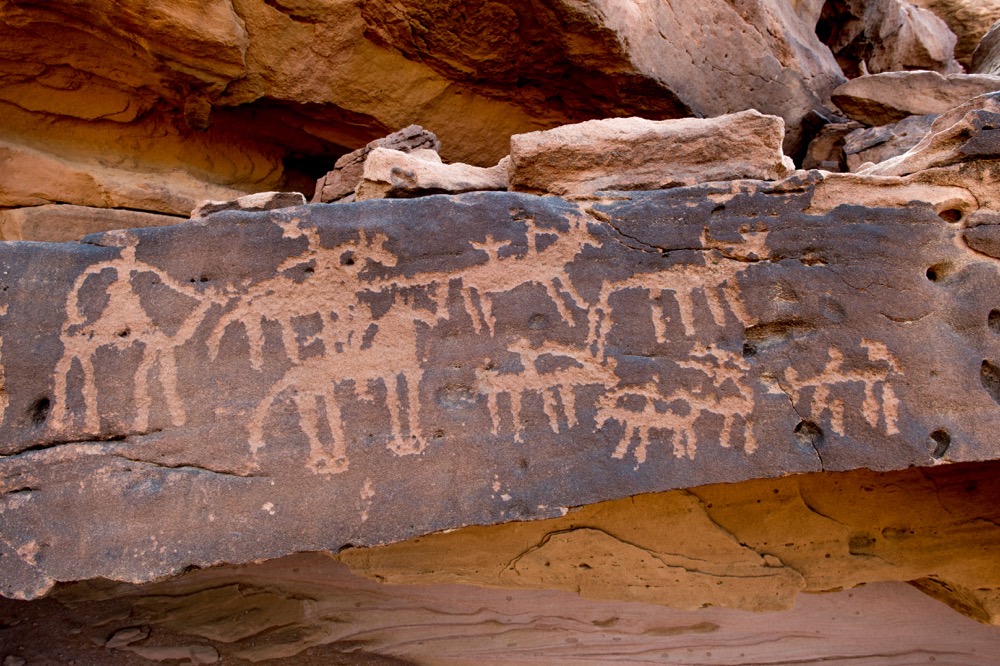
Peter Harrington, the London specialist book dealer that brought Khan’s book to Sharjah for the book fair, described it as “a pioneering monograph ... the first and sole edition of this seminal work, which addresses a hitherto neglected subject, challenges the received wisdom that influences in rock art in the region originated from Mesopotamia, the Levant, and the Nile Valley, helped to put the Kingdom’s ancient past on the map of modern knowledge, and paved the way to the listing in 2015 of the rock art of the Hail region as a UNESCO World Heritage site.”
“I am extremely surprised to see the cost of my book,” Khan said after Arab News broke the news to him of the price being asked for the out-of-print volume at the Sharjah International Book Fair, although he had some news of his own.
“The ministry is printing it again.”
That, however, is unlikely to prove a deterrent for collectors always keen to snap up rare first editions of books dealing with the region’s history — and there are few histories as fascinating as that of the rock art of Saudi Arabia, and few books as significant in the growing appreciation of the Kingdom’s past as Khan’s 30-year-old volume.
